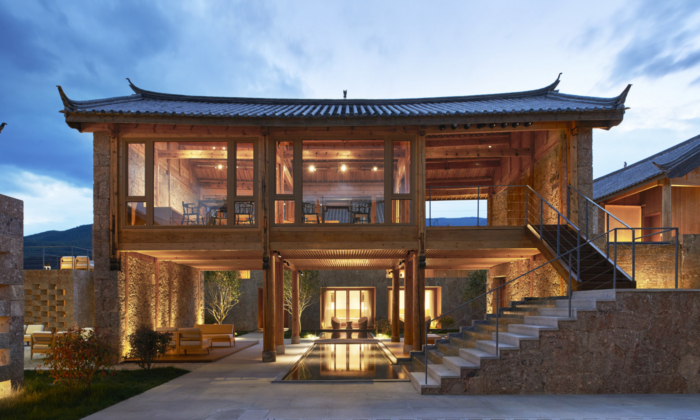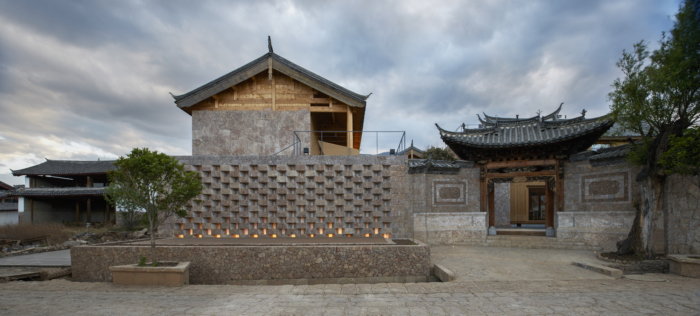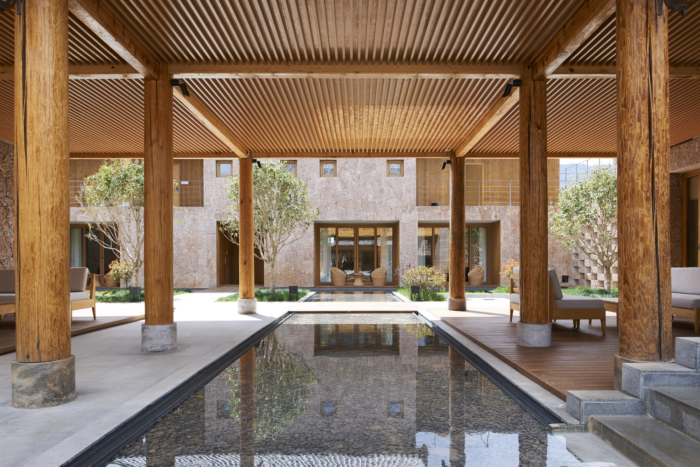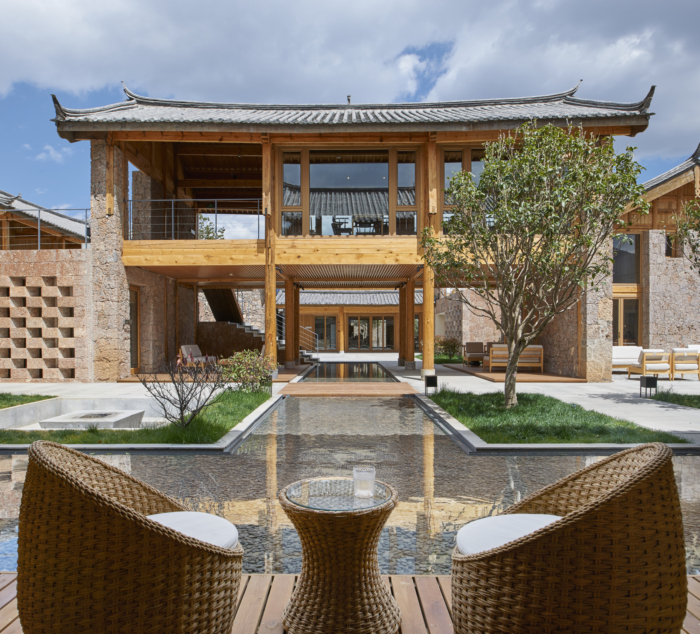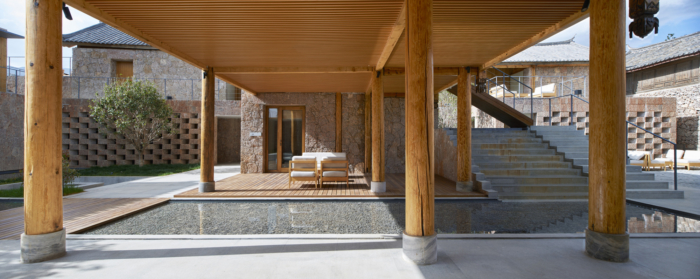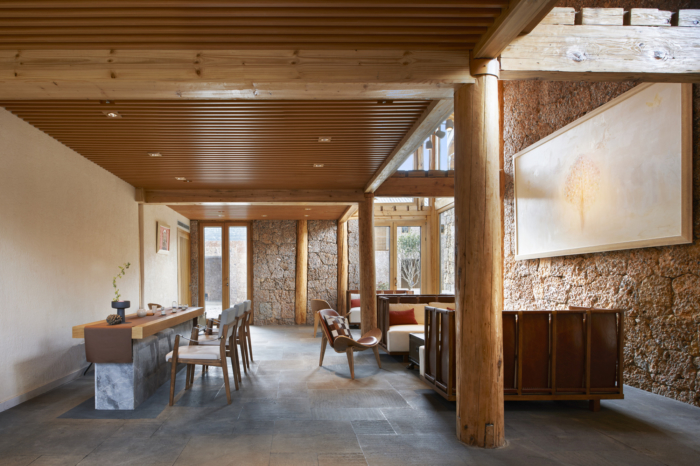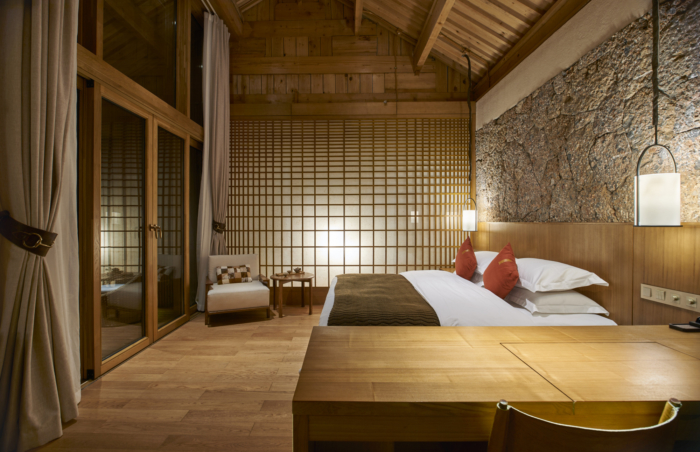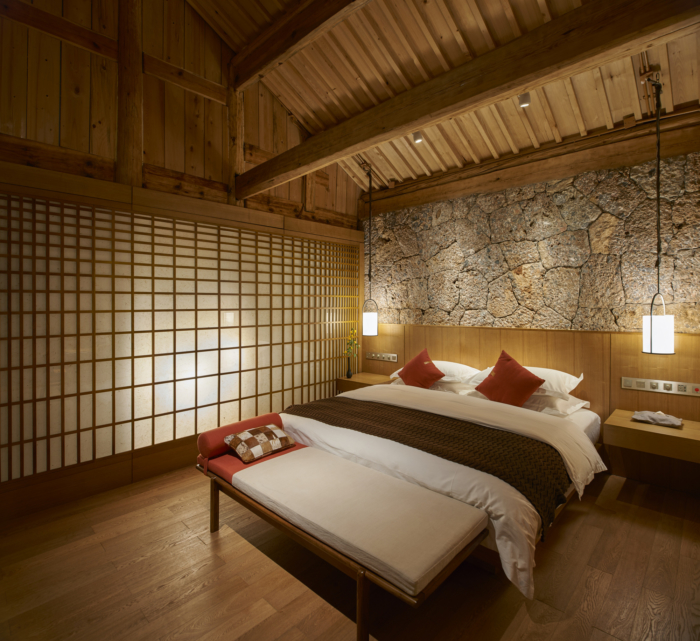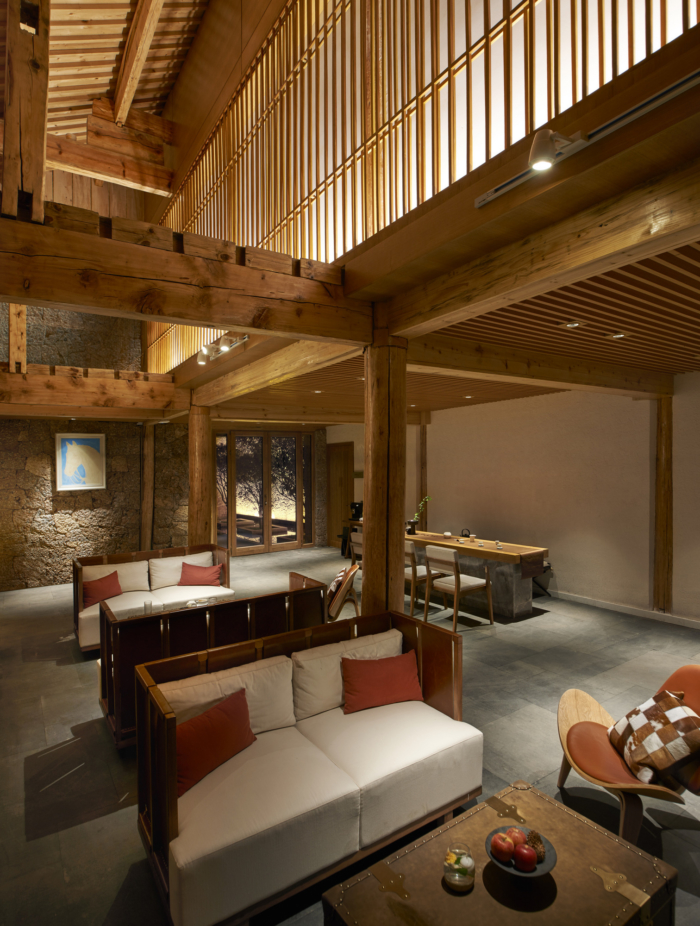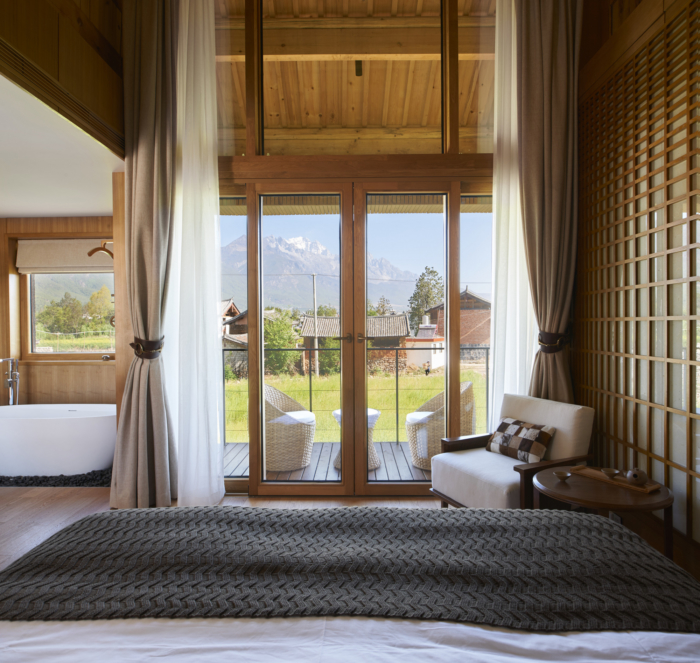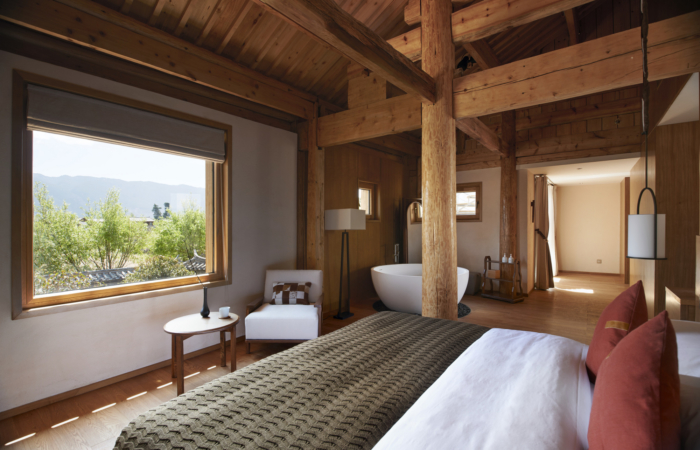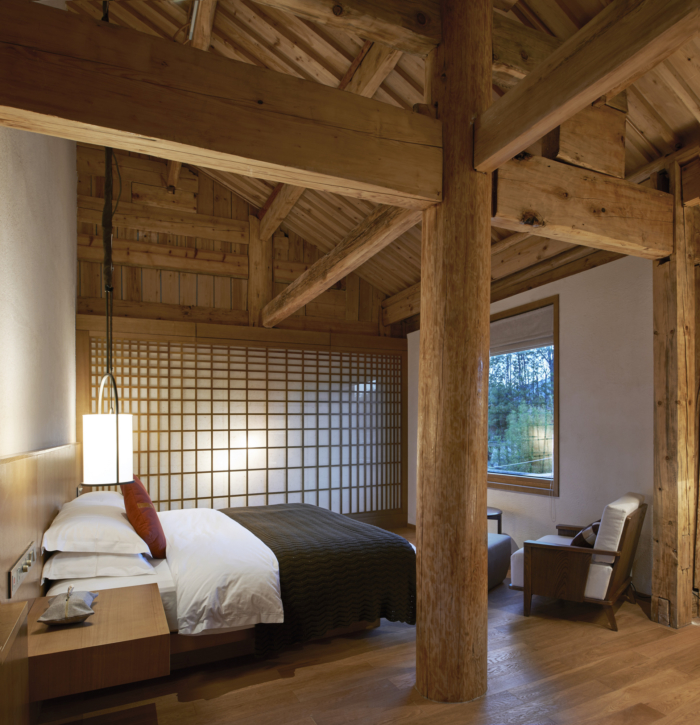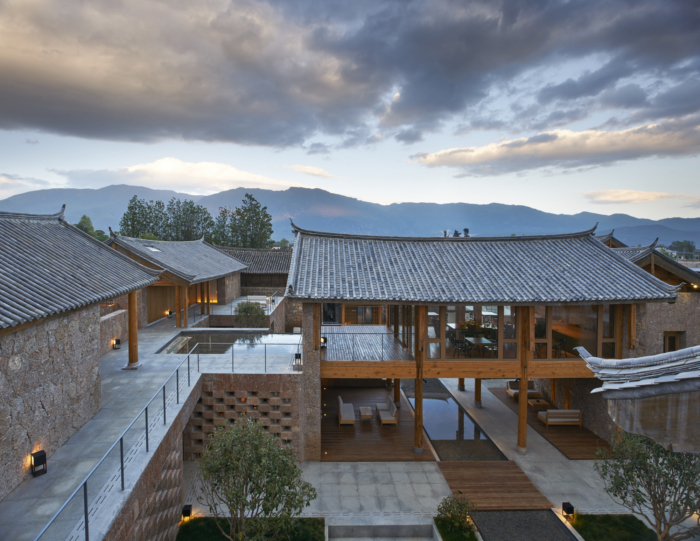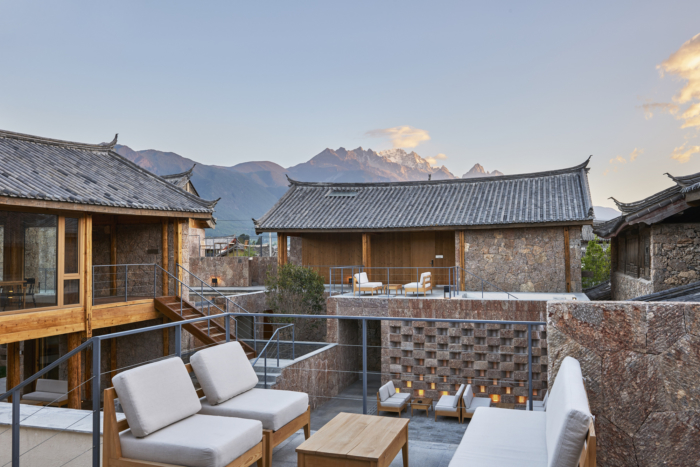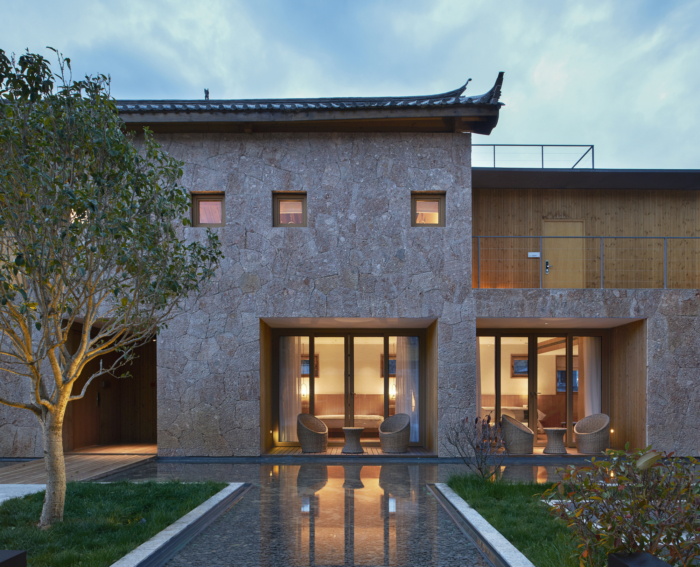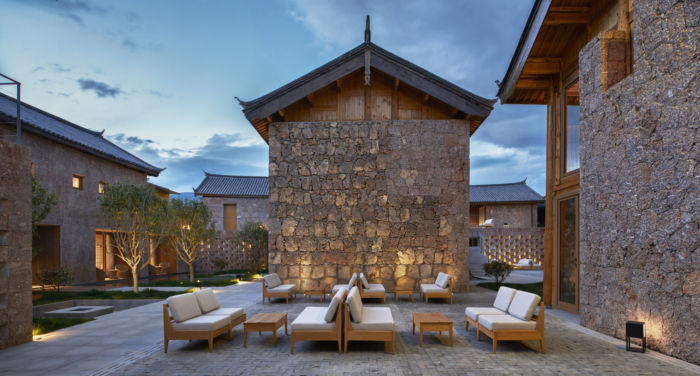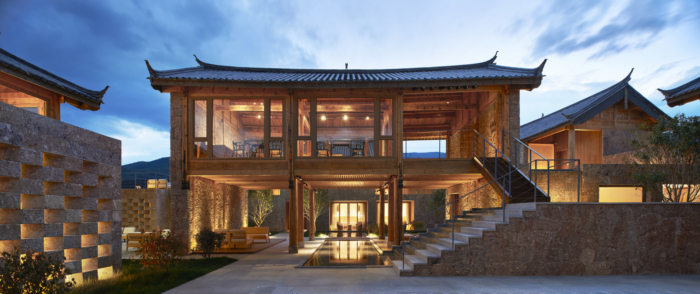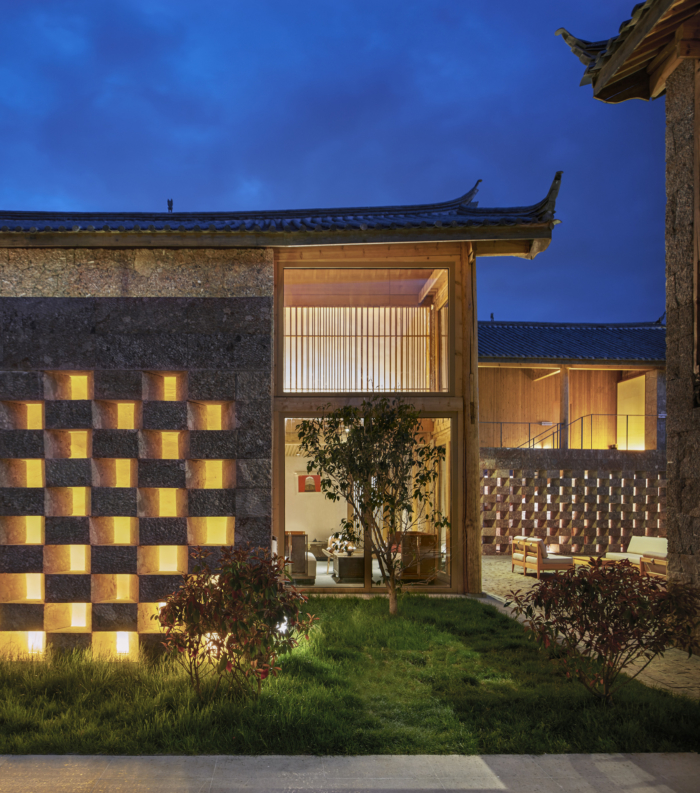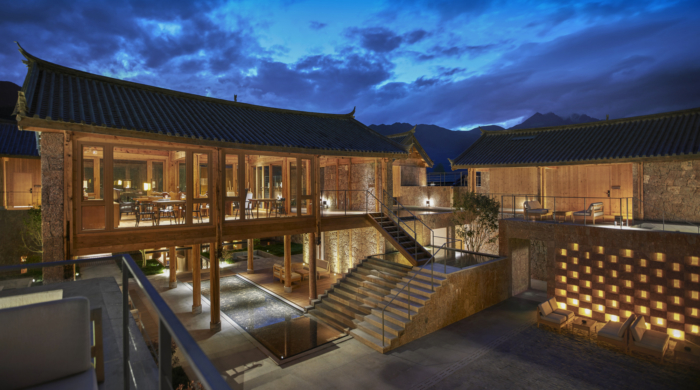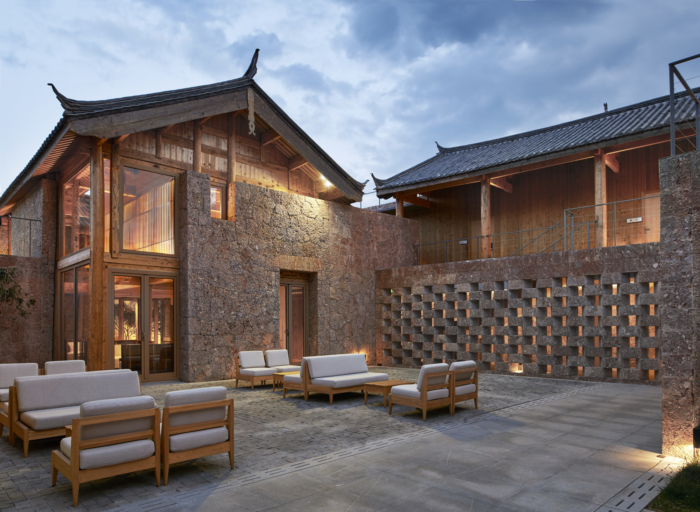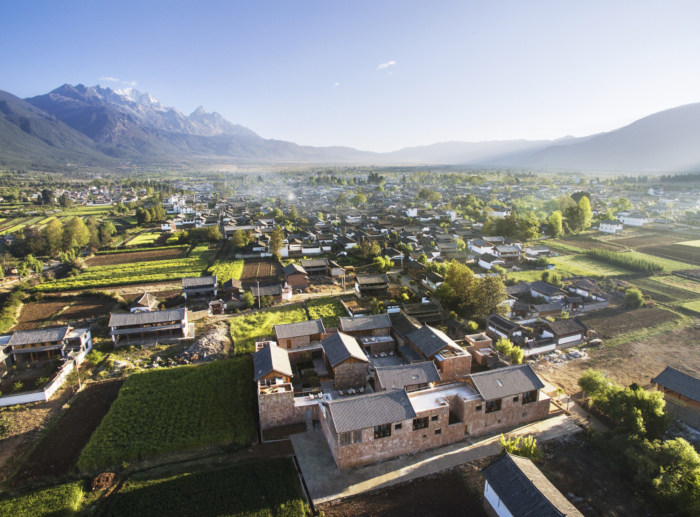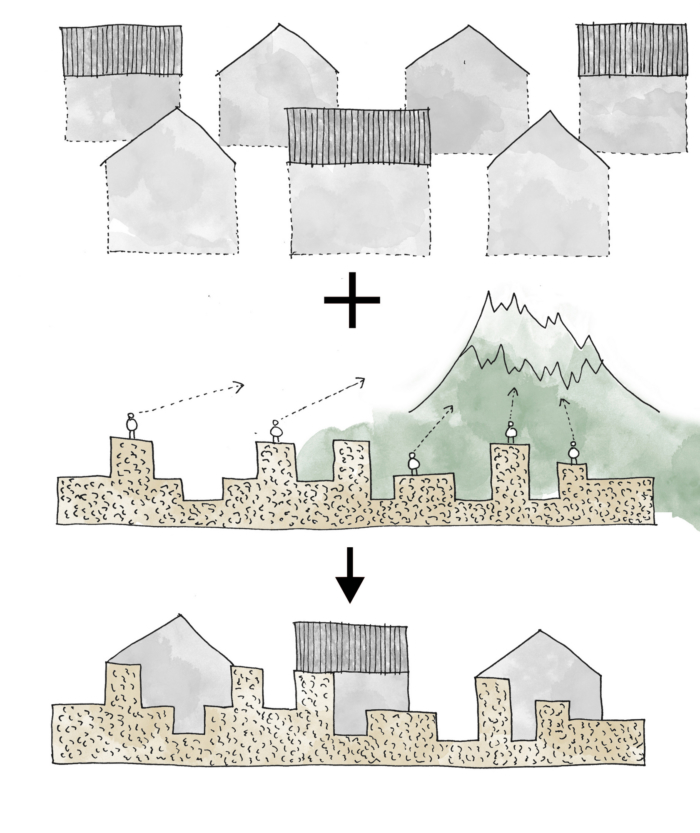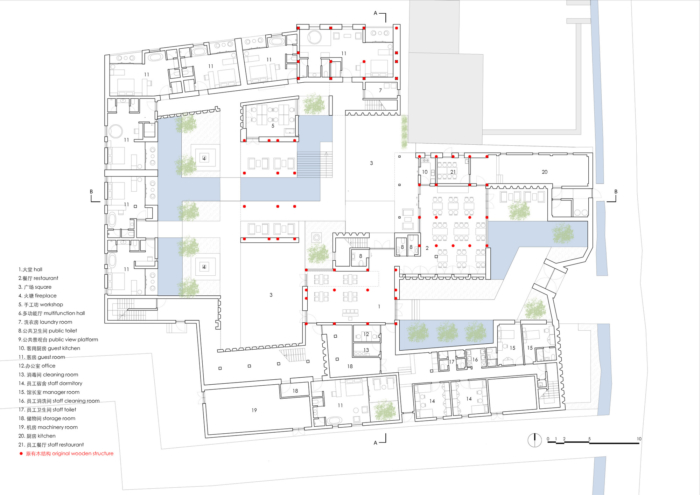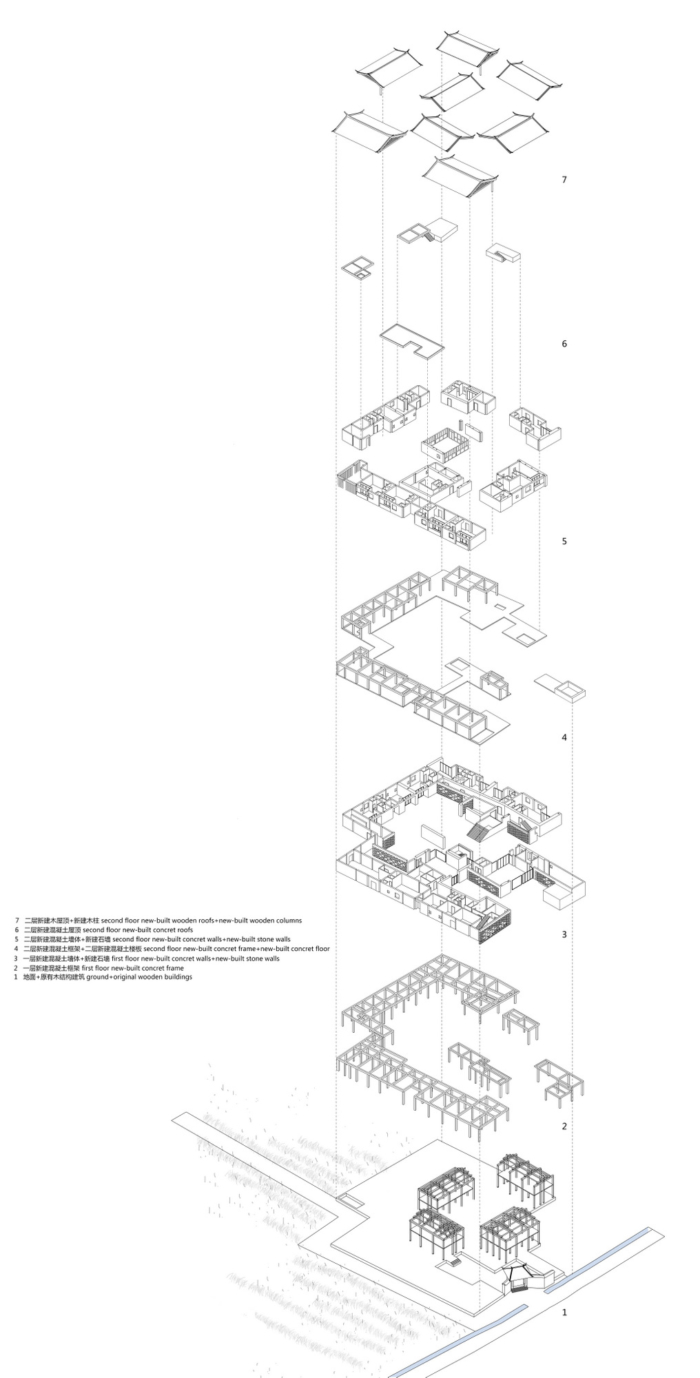Tsingpu Baisha Retreat
Tsutsumi & Associates‘ design for Tsingpu Baisha Retreat in Lijiang, China creates an idyllic rural setting for city dwellers looking for an escape from bustling urban life.
An increasing number of old houses in rural area are being renovated to resort hotels targeting for city dwellers recently in China. This project is located in Baisha Village, Yunnan Province, where is an idyllic rural area with Naxi traditional houses. The masonry façade of the old houses is made by stacking local Wuhua-stones, and people can take a view of the majestic Jade Dragon Snow Mountain nearby. We were requested to reuse the four existing houses and the main gate, also build new buildings in irregular shaped extended site around them.
First, we assume that the only wooden frame structures of the existing buildings were exposed. Under this condition, we set the combination of randomly stacked stone volumes to make various cozy platforms for enjoying the view of the snow mountain and the village. On the other hand, the roofs are regularly arranged starting from the existing 4 sections so as to let buildings harmonize with the traditional surrounding environment. As a result, the exposed wooden frame structures and wall surfaces were compared with the hard outer shell of Wuhua-stones, so the lightness and the heaviness form a sharp contrast.
For the external hollow Wuhua-stone wall to have the both of floating feeling and solemn presence, the plane of each stone was made trapezium to conceal the laminated line on the wall surface. The light wall in guestrooms and at eye-stop of corridor was made of local material Donba paper, and a gradation wooden louver was installed to suppress the light moderately.
Insert new thoughts using local materials counter to old memories such as aged wooden structures or rough masonry walls. With mere nostalgic preservation, it is only to plot a point in the space-time coordinates. For memories to connect the past and the future in a spiral way, we initiatively overlay new and old times and spaces in this architecture.
Design: Tsutsumi & Associates
Photography: Misae Hiromatsu, Yuming Song (Beijing Ruijing Photo)

